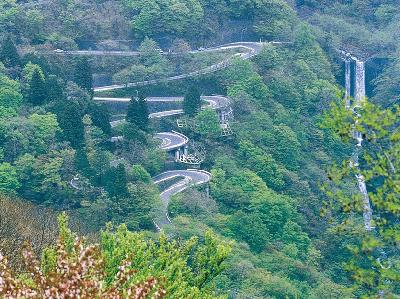Iroha-zaka winding road is a slope with 48 hairpin curves connecting Umagaeshi, Nikko City and Lake Chuzenji. It was nominated as one of “the 100 Best Roads of Japan”. This road is the main access to Oku-Nikko, where Lake Chuzenji and Nikko Yumoto Hotspring are located. It takes the one-way traffic system that the Second Iroha-zaka is used to go up and the First to come down. Each corner has a signboard with a letter of old Japanese alphabet in alphabetical order that stars from i-ro-ha. This road used to be for worshippers of Mt. Nantai and Lake Chuzenji in the past days. Women and horses had not been allowed to go up the slope until the early Meiji period, so the entrance of the slope was called Umagaeshi, which meant returning horse, and Nyonin-do (women’s hall) is located on the place where women returned after they worshipped Mt. Nantai. You can enjoy continuous exquisite views along Iroha-zaka, yashiotsutsuji (mountain azalea) in spring and autumnal leaves in fall. You can also command a panoramic view of Mt. Nantai, the Kegon Fall, and Lake Chuzenji from Akechi-daira on the second Iroha-zaka.
















